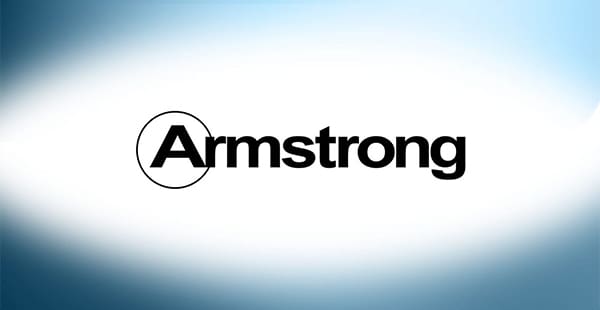01. History of Asbestos Use
Armstrong World Industries History of Asbestos Use
In 1860, Thomas M. Armstrong and John D. Glass founded Armstrong World Industries in Pittsburgh, Pennsylvania. The company began as a small cork bottle stopper manufacturer. By the 1890s, Armstrong World Industries was the largest producer of cork in the world.
The company expanded to produce insulation, flooring and ceiling materials. Around this time, asbestos was also starting to grow in popularity and was an easy and inexpensive additive to its new line of products.
In 1907, the company built a linoleum factory in Lancaster, Pennsylvania. This factory was followed by further expansion into South Gate, California; Kankakee, Illinois; and Jackson, Mississippi.
Armstrong World Industries survived World War I and the Great Depression and contributed to the war effort during World War II. WWII occurred near the beginning of the asbestos boom. The mineral was used heavily in the war efforts by many different industrial companies. Asbestos was also used in all branches of the military.
During this time, Armstrong World Industries continued to expand and acquired other companies, some of which may also have used asbestos in their products. The use of asbestos within Armstrong World Industries products ended by the mid-1980s.
Armstrong began having legal troubles related to asbestos in the 1990s. By 2004, it had accrued at least $413 million in asbestos liabilities and went bankrupt in 2006.
The company has continued to grow after restructuring its bankruptcy. It has acquired other companies and split into more specialized entities. Asbestos victims also continue to file claims against the company’s asbestos trust fund.
Resources for Mesothelioma Patients
02. Asbestos Products
Armstrong World Industries Asbestos Products
Armstrong World Industries’ first product, cork stoppers for bottles, was asbestos-free. However, the company soon expanded to produce asbestos products. Records indicate the company used asbestos fibers in some products from 1909 until the mid-1980s.
Asbestos-containing products produced by Armstrong World Industries included floor tile, ceiling products, lining felt and backing for sheet vinyl and acoustic cement. Asbestos was added to these building materials to improve resistance to chemicals, fire and heat.
Company records show Armstrong World Industries’ asbestos products have been used in nearly all 50 states and several territories.
03. Occupational Exposure
Armstrong World Industries and Occupational Exposure
Armstrong World Industries has grown steadily since its founding. By 1890, Armstrong employed more than 750 people. As of 2023, the company had about 3,000 employees.
Any employee who worked under Armstrong World Industries between 1909 and the mid-1980s may have experienced occupational asbestos exposure. Records show exposure occurred in the company’s production plants. Workers involved in the production of asbestos products, contractors who handled and installed these products, and anyone who spent time at the factories were at high risk of exposure.
People not employed by Armstrong World Industries may also have faced exposure from its products. The company’s products were sold and distributed widely, allowing contact with a variety of professionals. Many homeowners also used, repaired or otherwise handled Armstrong World Industries building products. Anyone who used or worked around Armstrong World Industries products may have been exposed to asbestos.
04. Asbestos Litigation
Asbestos Litigation Against Armstrong World Industries
By the 1990s, Armstrong World Industries began to be named in asbestos lawsuits. Initially, the company paid the lawsuits using insurance funds.
In a 1991 precedent-setting case, an insulator was diagnosed with pleural thickening before being diagnosed with asbestosis. On appeal, the worker won their case, which set a precedent under Colorado law regarding the statute of limitations for filing a lawsuit for a second asbestos-related illness.
By 1994, Armstrong World Industries had nearly $200 million in asbestos litigation costs. At the time, it was estimated the company would also be liable for almost $250 million in future legal payouts.
Because of these expenses, Armstrong World Industries filed Chapter 11 bankruptcy in December of 2000. When the company filed, it faced more than 175,000 personal injury lawsuits from people who claimed to have developed asbestos-related diseases as a result of the company’s asbestos use.
Two years after filing for bankruptcy, Armstrong World Industries was recognized as one of the top 100 polluters in the United States for 2002. Following its numerous legal and image issues, the company began working to rebrand itself and underwent a six-year plan to reconfigure the organization.
The current payment percentage for successful claims is 13.5%.
The asbestos trust fund was officially established in 2006. It began accepting claims on May 14, 2007, and was initially funded with $2.06 billion.
Since the trust opened, more than 300,000 claims have been filed, and the company has paid out more than $2.8 billion.
The current payment percentage of the trust is 13.5%. Actual payment amounts may be higher according to various factors including, but not limited to, the victim’s age, source of exposure, mesothelioma type and firm’s settlement history.
The Armstrong World Industries’ trust continues to accept and pay out claims today. If you believe you or a loved one were exposed, learn how a mesothelioma lawyer can help.




